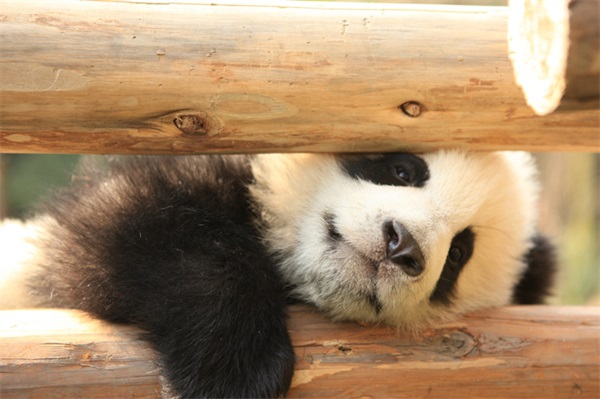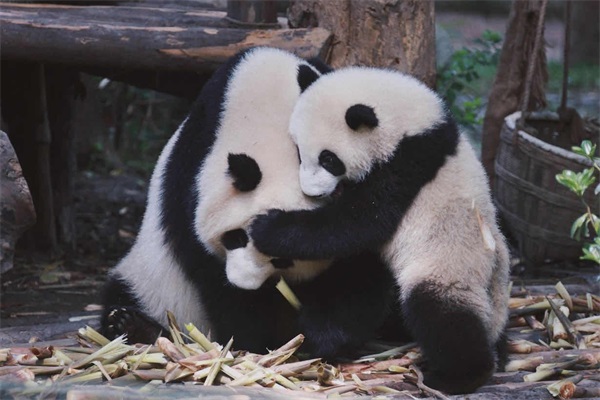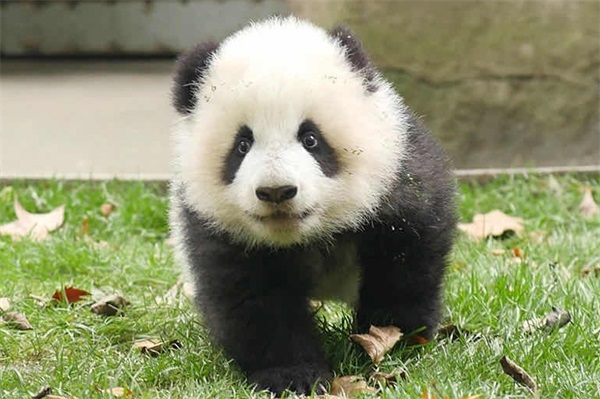The giant panda, also known as the panda bear or simply the panda, is a bear native to south central China. Though they famously dine on bamboo and fruits, pandas are omnivorous bears, and scientists still classify them as carnivores.

Pandas mainly inhabits the mountainous regions of Sichuan, Shaanxi and Gansu in China. Known as a "living fossil" and "China's national treasure", it is an ambassador for the World-Wide Fund(WWF) for Nature.
Pandas are known for their white fluffy hairs, spotted black eyes, black ears and a chubby body, which make them one of cutest creatures on the planet.



Pandas are rare because they have specific requirement for their living environment and it is difficult to breed them in captivity. As of the end of 2019, there were just over 600 pandas in captivity worldwide.
Pandas only ovulate once a year, and a short period of two to three days around ovulation is the only time a giant panda is able to conceive. However, their pregnancy can take up to five months. What has made it even harder is that the cubs born to captive pandas are also prone to problems such as premature death.

(Canadian Prime Minister and his wife, cuddling a baby panda )
The growing popularity of the panda is also due to the fact that with the growing international influence of modern China, the panda has been given a new historical mission and has become a symbol of peace, welcomed by people all over the world. Some countries also rent pandas from China so that people can go and visit the cute creatures in zoos, promoting cultural exchange and deepening friendship between the China and the rest of the world.

(The luxury Panda Palace in Netherlands )

(Visitors are queuing up outside Zoo of Tokyo, waiting for their turn to celebrate the 2-year-birthday of Panda "Xiangxiang)
In order to welcome the arrival of pandas, After 16 years of preparation, the Dutch people have spent 50 million yuan, building a 9,000 square meters of luxury panda palace; Canada's Prime Minister personally welcomed the arrival of pandas; in Japan, visitors had to queue up outside Zoo of Tokyo, waiting for three hours just to celebrate the 2-year-birthday of Panda "Xiangxiang".


Many people have discovered and exploited the huge business opportunities inspired by pandas. There are countless panda-derived gold coins, TV series, toys, games, stationery, etc. Even the logo of WWF has a panda motif.


Are you also attracted to cute pandas? Please do visit Chengdu Panda Breeding Research Base to see the elegance of pandas if an opportunity presents itself. Covering an area of 1,500 acres, surrounded by mountain peaks and greenery, the base for the relocation and protection of pandas, the place with the largest number of pandas in the world. Here, it is like being in a natural oxygen bar, where you can immerse yourself in the panda's most realistic living environment. There are also several special panda exhibition halls here, offering you more insights about China's panda culture.


In the Museum of Giant Panda, you can learn about the origin and development of the panda. Besides pandas, there are many rare insects, vertebrates, plants and other specimens for visitors to study and visit; in the Giant Panda Science Museum, you can learn about the efforts made by the panda base in panda breeding and biodiversity protection; in the Panda Hospital, you can learn about specimens of parasites pandas carry and the commonly used medicines for pandas; in the Giant Panda Kitchen, you will have the opportunity to help prepare the food of pandas.
The Chengdu Panda Breeding Research Base is now open to visitors, from Monday to Sunday, 7:30 am to 18:00 pm. Come and take a look!